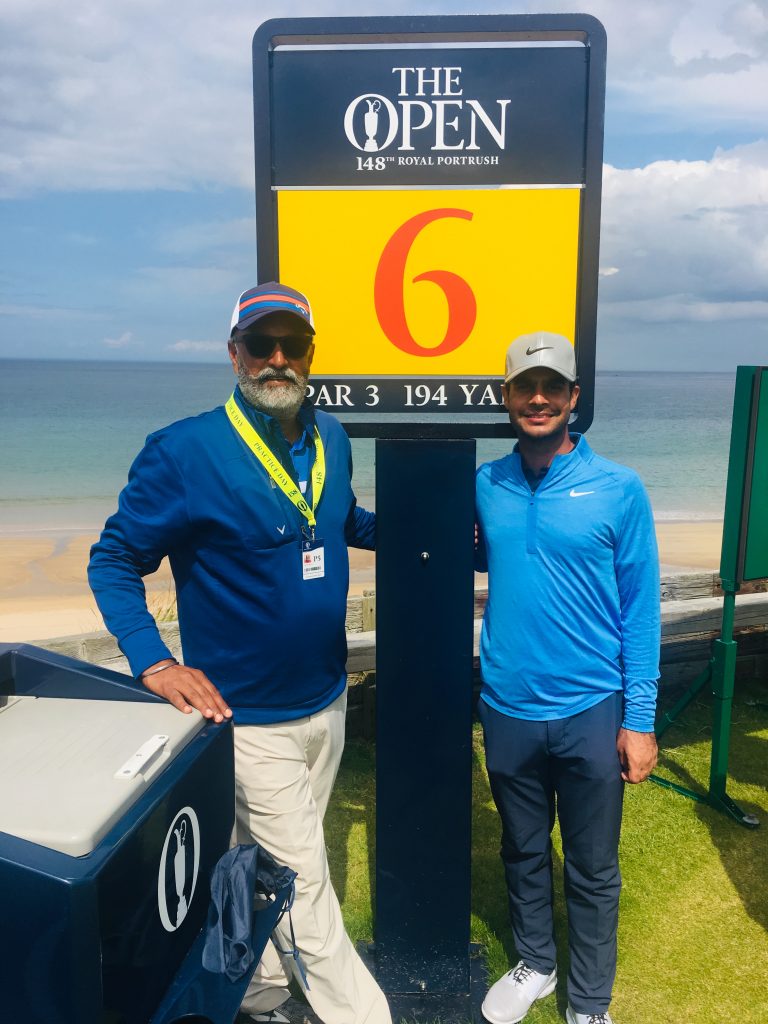Golf coach Jesse Grewal has 28 years of experience of working with juniors, including Shubhankar Sharma, Ajeetesh Sandhu, Karandeep Kochhar, Aadil Bedi, Abhijit Chadha— all of whom started and continue to work with him. He has run the junior programmes at both the CGC and CGA. He is also the Director of the National Golf Academy of India. He still works with juniors as he believes they are the future.

Here he shares his thoughts on introducing young kids to golf and how to help them grow into it –
I enjoy working with junior golfers as they are like clay and can be moulded to their true potential. When working with a junior, I believe that they should be good at both the short game and putting. This gives me an idea of how skilled they are. If any golfer does not enjoy putting, they should not look at a career in golf. The golfing mind and ball sense come from both a short game and putting which activate the right side of the brain ( intuitive and imaginative).
For a junior to become an elite golfer, they need to slowly understand concepts and experiment on different ways to move the ball. I constantly ask them for their feedback on shots as they will only learn if they understand what happens during a swing or a stroke. Juniors learn well visually and can copy swings and ball flights. Therefore, a demonstration by a coach is important. It is also important for a junior to get into a fitness programme designed for golf as it helps in their development as a player. The ABC’s of a fitness programme are based on agility, balance, coordination, and speed.
RELATED: The Development of Junior Golfers – Noah Montgomery

Introducing your child to golf: The first step is to find a good junior programme or a coach who makes learning ‘fun’. There should be instruction based on demonstration and not just words — as children have short attention spans. The equipment used should be suitable for them and ‘not too heavy, too long, too upright, or too stiff’. The emphasis should be on short game and putting, which gives them a sense of achievement as compared to the long game where they get frustrated because they see others hit it further. We get them to compete with each other without prizes. Team competitions are good too as they help them bond with others.
Taking them further: As soon as a child shows some promise, parents are keen to see them achieve and involve them in competitive golf. Very often this is too soon, and I feel that at times there are just too many junior competitions. Sometimes, overly ambitious parents start putting undue pressure on their kids. I think juniors develop their skills and begin to understand swing concepts and to experiment and figure out which concept gives them consistency in ball flight. For me, the two most important fundamentals are a square clubface and a forward lean of the shaft at impact. The former comes from a good grip and a good swing plane which eliminates any compensation of the hands. The latter comes from understanding the angle of approach that the club head follows — which is a hallmark of all good ball strikers.
General tips:
• Find a good coach who will help your child improve while simultaneously helping them enjoy the game.
• Apart from practice, get your child to play as often as they can. This can be difficult due to restrictions on juniors at some clubs. We are very fortunate in Chandigarh, as the CGC as well as Panchkula Golf Club encourage juniors and have no restrictions on them.
• Create a blueprint for the development of your junior golfer, and help manage their time too!
• Apart from the swing concepts, short game and putting the other important aspects are fitness, club fitting, and mental development.
• Getting the clubs fitted is often ignored and is hugely important — lots of swing faults come from ill-fitted clubs or poor athletic movement patterns.
• While creating a blueprint, understand statistics and what level a PGA tour pro is at, and what is achievable for your child.
• If required, find a good golf psychologist only when the scoring or on-course performance is below their skill level.



